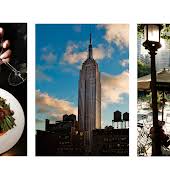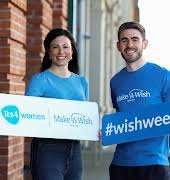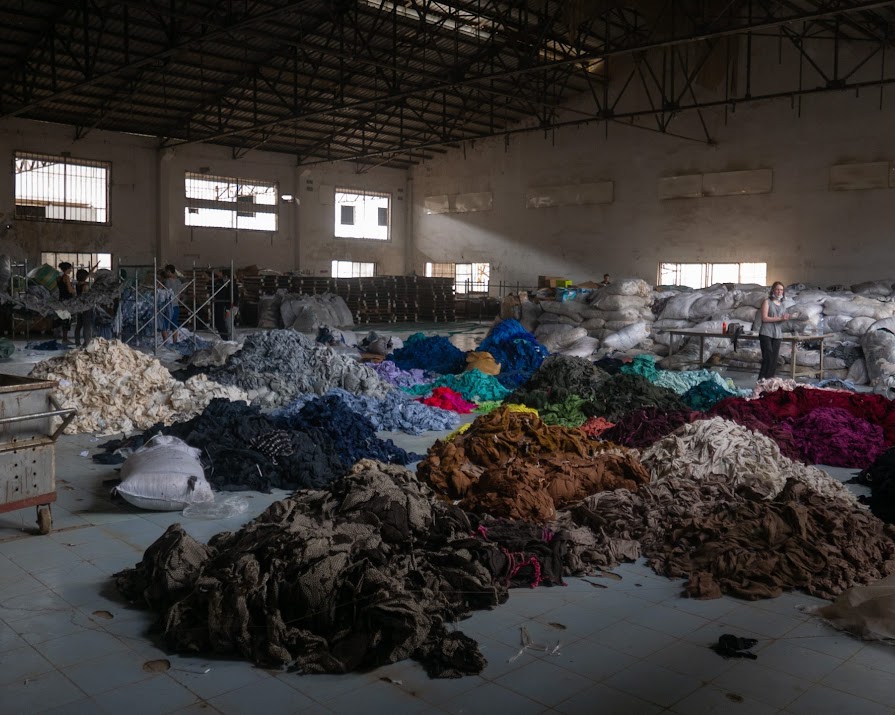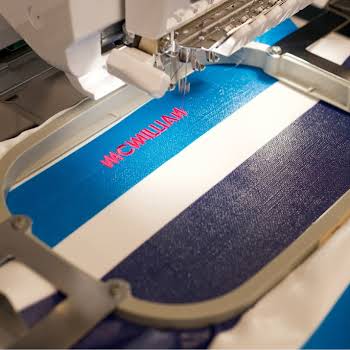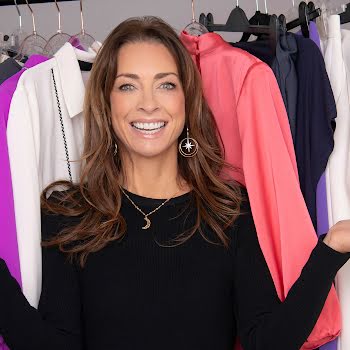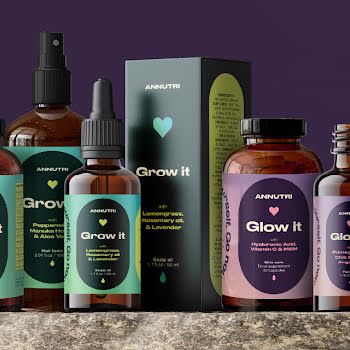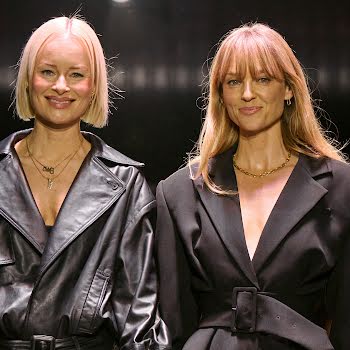By Sarah Finnan
27th Oct 2022
27th Oct 2022
*Header image is a stock image from Unsplash and not of a Shein factory.
Surpassing Amazon as the top shopping platform in the U.S this year, fast fashion giant Shein’s success is unrivalled. However, with the horrific findings of exploitation and overproduction from Channel 4’s recent documentary still fresh in people’s minds, the timing of the upcoming Dublin pop-up couldn't be worse.
Friends may tell you that buying from Shein is a gamble – postage is slow (the retailer is based out of China but ships to 220 countries), products aren’t made to last and it’s rare that what arrives in your hands is as it’s pictured on site. It was only cheap though, so who cares… right?
The problems run deeper than that I’m afraid, and there’s a seedy underbelly to the business that those behind the steering wheel would probably rather you didn’t know about. Unlucky for them, Channel 4‘s recent documentary has lifted the lid on the inhumane practices that have been allowed to go on behind closed doors for far too long.
Before we get into that…
What exactly is Shein?
Shein, pronounced “shee-in”, has been around for over a decade now, but it’s only recently that the site has properly taken off. Sales soared during the pandemic and it even overtook Amazon to become the most downloaded shopping app in the U.S. Now the largest online-only fashion company in the world according to Euromonitor, Coresight Research estimates that it generated approximately $10 billion in revenue in 2020 alone – its eighth consecutive year of revenue growth over 100% by the way. Competitors ASOS and Boohoo only generated $4.4 billion and $2.4 billion respectively in 2020. Shein is currently valued at $100 billion.
Unlike other retailers of its kind, Shein controls its own production chain, all the way from design and prototype to procurement and manufacturing. Each step is highly digitised thereby allowing the company to churn out thousands of new trend-driven products a day. The website averages 3,000 new styles a week – versus Boohoo who averages around 500 a week – with the general idea being to push people to buy, buy, buy. Less is not more; more is more and such overconsumption is driven, almost justified, by the company’s dubiously low prices.
There’s also a distinct air of mystery to the website that allows the company to shirk all responsibility. Few details about those who run the site, their supply chain or environmental practices exist… and that’s how they like it. Shein has gone to great pains to remain out of the limelight and many financial backers have even cited an oath of secrecy they committed to upon investing.
All we know is that it was first launched by Chris Xu as a wedding dress retailer in 2008 under the domain SheInside. Well-versed in all things SEO and brand marketing, he started out by sourcing garments from a wholesale clothing market in Guangzhou before the site acquired its own supply chain systems in 2014, making it a fully integrated retailer. By 2015, it had shortened its name to Shein and had a team of over 800 designers and prototypers working for them by 2016.
Things really took shape in 2017, though it’s largely the rise of TikTok and the onset of global lockdowns that helped to catapult it to its current popularity. The company made a 250% increase in revenue in the space of 12 months.
Scroll culture
Largely marketed at Gen Z and the TikTok generation, the website has increased its following with thanks to several celebrity endorsements and has previously collaborated with well-known musicians such as Katy Perry, Nick Jonas, Lil Nas X and Rita Ora for concerts and events.
Sponsored influencers include Addison Rae amongst others, with a string of capsule collections from D-list reality TV stars also helping to generate interest. It’s the latter category that Shein often teams up with, as so-called micro influencers (online personalities with between 1,000 to 100,000 social media followers) are often happy to promote the brand in exchange for free merchandise… meaning that Shein gets exposure without having to fork out for advertising/promotion.
with shein the vast majority of goods end up in the trash & clogging donation bays. in fact the goods are incidental! what people are paying for is the experience of shopping: the thrill of browsing an infinite variety of millions of fun, surprising items, imagining new selves—
— sara hinkley (@boneysoups) October 21, 2022
Like TikTok, the platform that has allowed the company to thrive, Shein works off an algorithm; inverting the way the industry typically functions and evaluating how customers react to products after they’ve already been launched. While other fast-fashion brands tend to mull over designs before pushing them out, Shein has flipped the script and just pushes everything out, tailoring subsequent products to how customers react. This might work well for the retailer’s bank balance, but it creates a sea of goods that usually end up in landfill.
Not only that, but it feeds into the constant “scroll culture” that Gen Z has become accustomed to; they’re playing on our addiction to social media and our smartphones and we fall for it every single time.
Untold: Inside the Shein Machine
https://www.youtube.com/watch?v=LYEm9BR4zVA
Last week, Channel 4 released a new tell-all documentary about the fast-fashion brand, essentially confirming what we already suspected and making it impossible for the public to dig their heads in the sand and ignore the problem any longer.
Hosted by journalist Iman Amrani, Untold: Inside the Shein Machine features hidden camera footage taken from inside two of Shein’s many factories in China. Shedding light on the company’s complete exploitation of workers, the documentary details how garment makers are regularly expected to work 16 to 18-hour days with quotas of over 500 garments a day.
Shein has been exposed to be even worse than we initially thought after Channel 4 sent undercover workers into their factories in China.
This is what they discovered… pic.twitter.com/hS7iUNrpJe— Molly Elizabeth (@molllyelizabeth) October 19, 2022
China’s labour laws state that workers are allowed to clock in a maximum of 40 hours per week. “There’s no such thing as Sundays [at Shein],” as one worker noted, later admitting that 18-hour-days are the norm and that workers only get one day off a month. The majority of workers are so exhausted that they resort to washing their hair at lunchtime – the only “free” time they have in their demanding schedules.
At one factory, workers told Channel 4 that they’re paid an average of 4,000 yuan a month (the equivalent of approximately €530). At another factory, workers said that they didn’t have a base pay and instead earn 3p per garment they make – they’re also docked two-thirds of their wages if any products are damaged in the process.
Resale app
On the very same day the Channel 4 documentary was released, Shein extremely conveniently launched their own “resale” app to “address the ongoing issue of textile waste” and “promote mindful consumption amongst its customers.” Called Shein Exchange, the new app offers American customers the option to buy and sell their pre-existing Shein pieces directly through the app – but with the news that the multi-billion dollar company is paying their garment workers just 3p per item and no indication they will reduce their volume of production, something doesn’t sit right.
As climate activist Venetia La Manna put it; “the actual audacity of the timing.” Other brands to have launched similarly suspicious “resale” apps include PrettyLittleThing and Urban Outfitters’ Nuuly app. Speaking about the latest venture in an interview with the Sourcing Journal, Shein’s director of sustainability, Caitrin Watson, claimed that “everyone is going to scream ‘greenwashing’ no matter what you do”… but as La Manna pointed out, that is categorically untrue. “Everyone is going to scream ‘greenwashing’ when your garment makers are forced to work 18 hour days.”
I was asked by the folks on my Instagram to share my thoughts on the findings from the Channel 4 documentary about @SHEIN_Official – Thanks to The Accessible Mag for giving me a free space to brain dump. Would love to hear others’ thoughts on it too – ps. I didn’t hold back. ???? https://t.co/Zzy0FX9wlg
— Dr Brett Staniland (@TwinBrett_) October 24, 2022
“People are going to say what they’re going to say. It’s not going to keep us from trying to do the right thing,” Watson later added. La Manna countered by saying that “the ‘right’ thing would be to re-think your entire business model, that begins with garment maker welfare.”
Stating the obvious (that “circularity is the future of fashion and finding places to engage in the circular movement is really important”), it’s clear that Watson is well aware of what needs to be done… but Shein’s resale app is the equivalent of putting a plaster over a wound that actually needs serious surgery. Their entire business model hinges on the idea that more is more, with the platform pushing thousands of new items every single day. How, I ask, is that helping the circular economy?
Smoke and mirrors
Surface-level investigations into Shein will tell you that it’s great. They’re size inclusive (they cater up to a 4XL) and their ‘Shein cares’ hashtag will have you believe that they’re committed to all the same causes we care about too – including, but not limited to, feminism and sustainability. But, the Shein website is one built on greenwashing, exploitation and buzzwords. Products are made from shoddy materials that are not designed with longevity in mind; they’re barely solid enough to be worn once, which means that they’re definitely not suitable for the resale economy.
“There is so much disposable clothing now, which is designed to be worn once or twice. If these brands really believed in resale, they would improve the quality of their clothing. Otherwise, it’s just greenwashing,” Maria Chenoweth, CEO of charity shop chain and textile waste charity Traid told Vogue recently. Ultra fast fashion has exaggerated the problem.
Good on You – a website that rates brands on a variety of important social and environmental issues – ranks Shein as lowest on the scale. Discouraging consumers from shopping there, the website claims that Shein isn’t “taking adequate steps to ensure payment of a living wage for its workers. “Shein’s environment rating is ‘very poor’”, it states. “There is no evidence that it has taken meaningful action to reduce or eliminate hazardous chemicals. It uses few eco-friendly materials. There is no evidence it reduces its carbon and other greenhouse gas emissions in its supply chain. There is no evidence it has a policy to minimise the impacts of microplastics.” Its labour rating is also “very poor” and there is no evidence that policies safeguarding workers against the impact of Covid-19 have been implemented.
Independent design
Aside from the ethics and sustainability side of things, the company has already had several other mishaps in the past few years – many of them extremely offensive. For example, Shein came under fire after a necklace with a swastika charm was spotted for sale on the website last year. Shoppers also noticed that it had Muslim prayer mats available to buy, though they referred to them as “decorative rugs”. Shein apologised for these “mistakes” and put it down to the algorithm-driven design process allowing such oversights to slip through the fold.
Im SO over these major brands stealing from black designers. @SHEIN_official STOLE my @sincerelyriaxo designs to a T. They couldn’t even change ONE thing and it’s now one of their highest selling items. They even stole the brands aesthetic. Like Come on pic.twitter.com/ose8DiM9hK
— Mariama Diallo ? (@MariamaDiallo__) June 11, 2021
The company is also frequently ridiculed for piggybacking off other designers and ripping off their designs. Unfortunately, intellectual property infringement is quite a normal practice in the fast-fashion world. Channel 4’s documentary confirmed this with their reporter admitting that she discovered a “culture of design theft” within the fast fashion company. Shein rebuked by telling Channel 4 that “when legitimate complaints are raised by valid IP rights holders, Shein promptly addresses the situation.”
More recently, a Marketplace investigation found that many of the products the company churns out aren’t actually safe for use. Out of 38 samples, one in five items had elevated levels of chemicals that experts found concerning – one particular jacket for toddlers had more than 20 times the amount of lead that Health Canada says is safe for children. “If the final product isn’t safe for me, it’s definitely not safe for the workers that are handling these chemicals to make it,” Miriam Diamond, an environmental chemist and professor at the University of Toronto commented.
Climate crisis
And that’s without even mentioning the obvious environmental impact that the retailer has. The fashion industry’s carbon footprint is responsible for 8-10% of the world’s total global emissions – more than that of all international flights and maritime shipping combined. The world is in the midst of a climate crisis, yet Shein (and other such fast fashion retailers) continue churning out new trend-driven products at breakneck speed.
Clothing production has doubled in the past 15 years, but the number of times an item is being worn has decreased by 36%. In even more worrying news, global clothing consumption is projected to rise by 63% by the time 2030 rolls around… that’s less than a decade away. Most of fashion’s environmental impact comes from the use of raw materials: cotton uses about 2.5% of the world’s farmland while synthetic materials like polyester require an estimated 342 million barrels of oil every year. Clothes production processes such as dying require 43 million tonnes of chemicals a year. The industry also uses a lot of water – it takes approximately three thousand litres of water to make one t-shirt.
Responding to Channel 4’s findings, a spokesperson for Shein said that the company was “extremely concerned” by the claims and intended to investigate and sever ties with any of its suppliers that failed to meet its standards for responsible sourcing. Whether the company will actually make good on such promises, remains to be seen. “You can’t say that you’re committed to solving a problem when you’re the person creating the problem,” Chenoweth argued.
Dublin pop-up
Shockingly, the fast fashion brand has decided to continue with plans for an Irish pop-up store, confirming that their Jervis Centre shop will open as expected. Set to run from November 4 to 8, the pop-up encourages customers to “come shop the hottest items this season, treat yourself at our gifting area and party the night away with our in-store DJ”. The move comes after the company opened their first Dublin showroom in March this year, giving shoppers the chance to browse the brand’s SS22 collection in person. However, while none of the items were actually available to buy on the day, the pop-up still caused quite the ruckus with a large group of protestors gathering outside to voice their concerns, and with Channel 4’s findings still fresh in the public’s consciousness, it’s unlikely that Shein’s next pop-up will be without controversy either.
In short
We all know that fast fashion and overconsumption are huge problems for the environment. Prioritising quality over quantity is important, as is supporting local brands. That said, luxury isn’t always an affordable option and preaching about why you should never buy a pair of fluffy socks or a kitschy Christmas jumper from Penneys won’t do much by way of helping the problem – oftentimes it does the opposite, closing people off from hearing your side of things. Conversations around sustainability are extremely important but they are also extremely nuanced as it’s an issue that is intrinsically linked with privilege, so, unfortunately, there is no “one size fits all” solution here.
When people post alternatives to Shein SPECIFICALLY, the point is not to get you away from fast fashion as a whole, it's to acknowledge that Shein is legitimately the worst of the worst. Yes, many companies have similar issues, but there are levels and SCALE matters. pic.twitter.com/zHgFtwJPXF
— Lakyn Thee Stylist (@OgLakyn) October 21, 2022
Shein has a $70 billion valuation because middle class and upper class people are buying hauls in the hundreds of dollars regularly, while hiding behind poor people in defense of their choices.
— Cora Harrington (@CoraCHarrington) October 21, 2022
However, with Shein continuously dubbed “the worst of the worst” by critics, it’s hard to condone purchasing from them. The brand’s entire business model speaks to a global problem with overconsumption and exploitation. Garment makers produce upwards of 500 new garments a day – and with those items then on sale for as little as a few Euro, it’s no wonder that people have started to see clothing as disposable. It’s all about the short-term payoff and people who buy from Shein aren’t thinking about quality or longevity when products are completely trend-driven and shoddily made.
But, the fashion industry is one of the biggest polluters in the world and casting a blind eye to the problem is no longer an acceptable way of “dealing” with the problem. Safe to say, if you can switch your humanity off at the thought of worker exploitation, a culture of overconsumption, the destruction of the planet and cheap dresses, you’re going to love the Shein Dublin pop-up.
*Header image is a stock image from Unsplash and not of a Shein factory.






